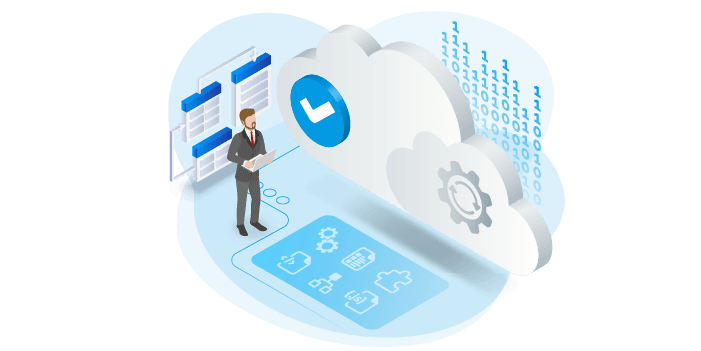My previous blog in this series: Hasten digital transformation? Touched on the top 10 ICT predictions for 2020 from IDC. Unsurprisingly, cloud computing featured prominently in those predictions, and therefore, deserved a blog article of its own.
Before we get into those predictions, let’s take a quick look at what the cloud offers, in particular, to ICT organizations.
Cloud service options
When looking at the types of cloud services available, organizations generally have a choice between three options depending on their specific needs, and they are categorized as follows:
Software as a Service (SaaS)
SaaS is a ready-to-use, out-of-the-box solution that meets a business need. Often, modern SaaS are built on top of IaaS or PaaS platforms.
Platform as a Service (PaaS)
PaaS is most often built on top of an IaaS platform. It allows you to focus on app development instead of infrastructure management.
Infrastructure as a Service (IaaS)
IaaS provides most flexibility when building custom-built apps, as well as a providing a general data center for data storage.
To summarize, depending on the number of resources your organization has or want to put into their cloud solution, SaaS is the full package, PaaS is a platform to build on top of, and IaaS provides you the absolute foundation to build your cloud solution.
 Cloud Predictions
Cloud Predictions
IDC’s IT industry predictions for 2020 give an intriguing look at what the future may hold for organizations that look to adjust accordingly as business and technology both continue their rapid evolvement. Here are those predictions:
- Connected Clouds: 70% of enterprises will integrate cloud management of some kind by 2022.
- Industry Apps Explosion: over 500 million digital apps and services will be developed and deployed using cloud-native approaches By 2023. Most will targeted industry specific digital transformation use cases.
- Tech Platform wars: the Top 5 public cloud mega platforms will consolidate at least 75% of market share. Furthermore, the top 10 pureplay SaaS vendors will generate approximately 20% revenue from expanding PaaS services by 2023.
- Every Enterprise a Platform: 60% of the G2000 will have a digital developer ecosystem by 2023. Half of those enterprises will drive 20%+ of digital revenue through their digital ecosystem/platform.
- Trust: 50% of the G2000 will name a Chief Trust Officer by 2023 overseeing departments such as security, finance, HR, risk, sales, production, and legal.
Where digital transformation and economy are mentioned, it’s hard not to include cloud services. Since its launch in 2011, Microsoft Office 365, for example, has become the brand of choice, leading people to the cloud and establishing itself as the go-to cloud business platform for enterprises.
 Cloud Management
Cloud Management
If the last decade taught us anything, it’s that we’ve not only seen the rise of cloud computing, but also the need for robust cloud management to help oversee and control it. With data hosted externally not on internal servers, it naturally brings a feeling of risk and a need for added security.
Due to high-profile security and data breaches, many organizations implement blanket security policies instead of treating each situation uniquely. This type of practice can sometimes result in ambiguity surrounding security, IT, and end-users for usability and sharing capabilities. Now throw into the mix uncertainty around on-premises versus cloud environment security and governance practices, it becomes even more confusing.
However, as we continue our journey into this decade, I believe security worries regarding the customization and user interaction of such platforms are becoming less. Organizations are finding solutions to govern and mitigate those concerns, and cloud user adoption is becoming the norm across the board.
If we dig deeper to uncover the pain-point and who it affects, you must look no further than the platform administrator, whose job is to both deploy solutions into production from development and govern business users ensuring platform hygiene. Without this key role, cloud management becomes unruly fast.
What is the solution
The keyword is control. An uncontrolled or out of control cloud platform is a powder keg ready to ignite. Automating policy monitoring would significantly help those in charge of overseeing IT governance or having to enforce it.
By automating this process, you can begin to take back control and have the time to create unique permissions for users creating business solutions for their daily activities. I recommend taking a look at Rencore Governance. With Rencore Governance, governance becomes dynamic, with its highly flexible, tool-based governance approach.





